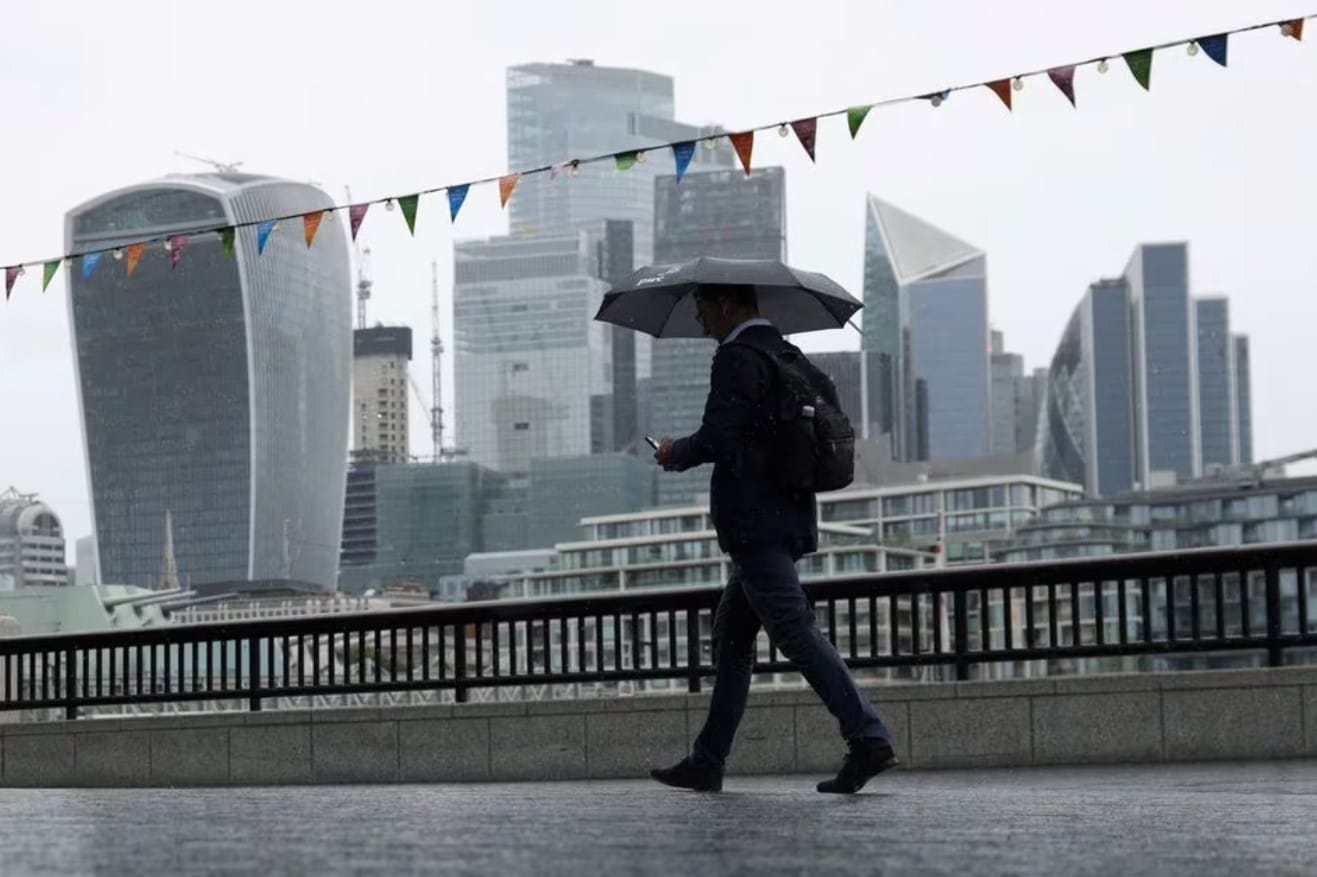British pay growth slowed in May and employee numbers dropped further last month, but the cooling in the labour market which had alarmed some policymakers appeared less acute than previous data had suggested, official figures showed on Thursday.
Annual wage growth, excluding bonuses, slowed to its lowest since the second quarter of 2022 in the three months to May at 5.0 per cent. But the figure was still slightly higher than the 4.9 per cent median forecast from economists in a Reuters poll and April’s pay growth was revised up to 5.3 per cent from 5.2 per cent.
The number of employees on company payrolls dropped by a provisional 41,000 in June after a 25,000 decline in May.
However, the May decline was far less sharp than the originally reported reading of 109,000, which represented the biggest decline since early in the COVID-19 pandemic and had triggered concern that businesses were retrenching rapidly in the face of higher labour costs and a weak growth outlook.
“The latest figures ease immediate pressure on the Bank of England to accelerate interest rate cuts. Though the labour market continues to soften, the hefty revision to May’s payrolled employees figure paints a less alarming picture than previously,” said Jack Kennedy, senior economist at recruitment site Indeed.
Five-year British government bond yields rose to a one-month high after the data and financial market expectations for an August rate cut softened marginally.
The ONS said May’s initial estimate of the fall in payroll numbers had been more provisional than usual due to an earlier-than-usual publication date for the labour market data last month.
INFLATION PRESSURE
The Bank of England is closely watching wage growth and employee numbers for signs of how persistent domestic price pressures are likely to prove, especially after data on Wednesday showed inflation in June rose to its highest since January 2024 at 3.6 per cent.
Most BoE policymakers view annual wage growth of around 3 per cent as desirable for consumer price inflation to stay near its 2 per cent target over the medium term.
In May, the BoE forecast that annual private-sector wage growth, excluding bonuses, would be 5.2 per cent in the three months to June and slow to 3.8 per cent in the final quarter of this year.
Thursday’s data showed that this measure of pay growth slowed to 4.9 per cent in the three months to May.
Despite the above-target inflation – which the BoE does not forecast to be back on track until early 2027 – most economists expect the BoE to cut rates by a quarter point next month and again later this year.
A combination of fewer job vacancies and more people looking for work is one of the key reasons why the BoE thinks it needs to keep cutting interest rates at a gradual pace to stop inflation falling too far below target in the longer term.
Some employers have been saying that they expect to scale back hiring due to an increase in the minimum wage and employers’ social security contributions that took effect in April, as well as a planned tightening of employment laws.
Thursday’s data showed that the number of job vacancies fell by 56,000 in the second quarter to 727,000, the lowest number since the three months to April 2021.
There was also potentially concerning news on unemployment, though long-standing problems with the response rate to the ONS’ labour force survey means the BoE places less weight on it and related employment and inactivity numbers than in the past.
Britain’s unemployment rate in the three months to May rose from 4.6 per cent to 4.7 per cent, its highest since the second quarter of 2021, in contrast to economists’ expectations in a Reuters poll for it to stay unchanged.
The increase appears to reflect more people entering the labour market to look for work.
The number of people in work rose by 134,000 on the quarter – far above economists’ forecasts for a 46,000 rise – while there was a 139,000 drop in “economic inactivity”, a category that includes the long-term sick, students and unpaid carers but not unemployed people looking for work.
Higher inactivity since the COVID-19 pandemic has been a major concern of British governments and this fall reduced the inactivity rate to its lowest since April 2020 at 21.0 per cent, down from 21.4 per cent in the three months to February.
“The LFS data suggest the labour market is easing in a positive way, with the inactivity rate falling as employment continues to growth. That could be disinflationary if it continues,” said Rob Wood, chief UK economist at Pantheon Macroeconomics.







Click here to change your cookie preferences